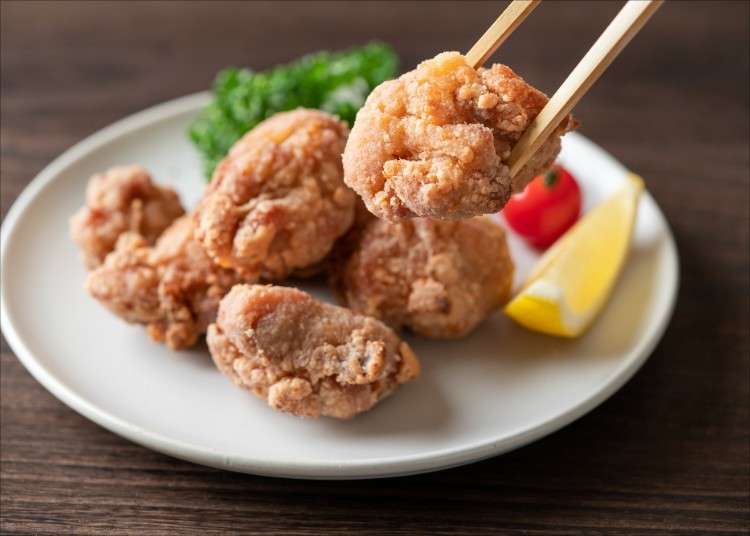
In Japan, besides the reasonably-priced and easily-obtained chicken from the supermarket, there is also “jidori” chicken, which is top quality chicken with a rich taste. Amongst the varieties of jidori chicken, are Hinai Jidori, Nagoya Kochin, and Satsuma Jidori, known as the Three Great jidori of Japan.
Here, we’ll be explaining the fundamentals of the different cuts of chicken, and starting from the Three Great Jidori, we’ll be picking our top 10 jidori breeds from the many varieties available and their recommended dishes.
- Table of Contents
-
- What is jidori chicken in Japan?
- Cuts of chicken and their unique characteristics
- 10 varieties of jidori chicken you have to try once!
- 1. Hinai jidori
- 2. Nagoya Cochin
- 3. Satsuma jidori
- 4. Okukuji Shamo
- 5. Sai-no-kuni jidori Tamashamo
- 6. Suruga Shamo
- 7. Hyōgo-ajidori
- 8. Awao dori
- 9. Hakata jidori
- 10. Miyazaki Jitokki
What is jidori chicken in Japan?
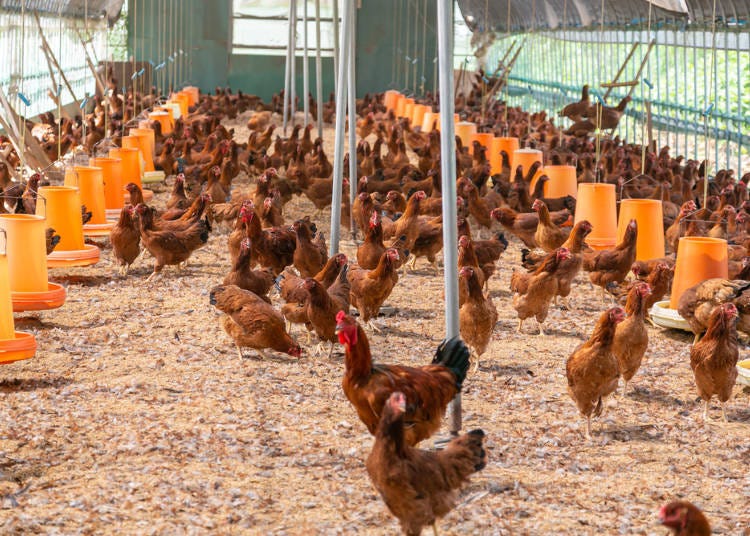
Jidori chicken is different from regular broiler chickens and “Meigara-dori”, or branded chickens, which are broiler chickens bred for a specific flavor that are rare and pricey, but are chickens bred and raised in a specific area.
The standard for determining the jidori standard for chickens stems from the Meiji era (1868-1912), from the 38 breeds of chicken that have existed since that era, and at least 50% of bloodline from jidori chickens have to come from those varieties, with a certificate of birth to boot.
On top of this, the chickens are bred under specific conditions, only ready for consumption at least 75 days after the hatching date, and from 28 days after hatching, they have to be raised as free-roam chickens, with less than 10 chickens per square-meter of land.
There are set Japanese Agricultural Standards for the chickens too. Raised and bred under such strict conditions, the meat is chewy with various unique flavors.
And, unlike beef or pork, there is no grading system for chicken meat. The reason is that while cows are raised for fourteen to twenty months, and pigs for about six months, chickens are raised for a relatively shorter period, and broiler chickens, in particular, have no distinct differences, and as such, it is difficult to judge the quality.
However, as chicken meat is not graded, there are instead three varieties depending on the age of the chickens and their quality, namely “wakadori” (ready for consumption seven to eight weeks after birth), “meigara-dori”, and “jidori”.
Due to the strict agricultural conditions, only 1% of the chickens in Japan meet the requirement, making it a high-quality ingredient.
Cuts of chicken and their unique characteristics
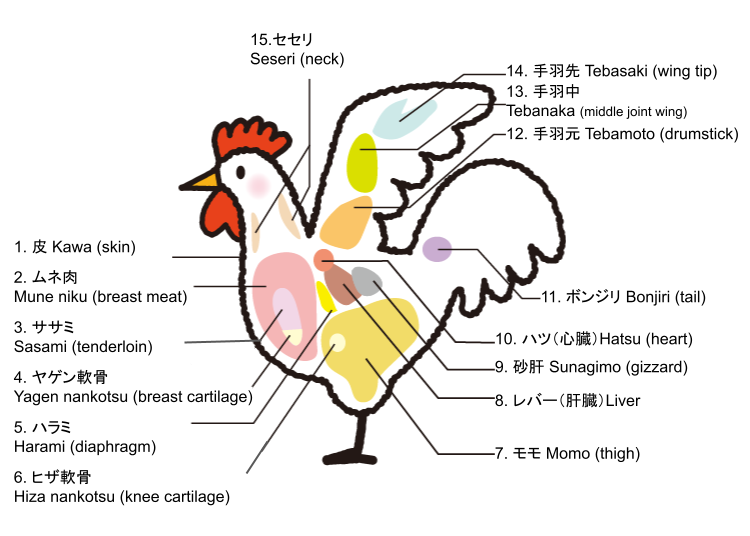
The meat of jidori chickens, first and foremost, varies widely depending on the cut and preparation method.
From here, we’ll be following the parts numbered in the illustration above in order, and explaining the various characteristics of each part.
When ordering from yakitori shops and other eateries, there are cases where you have to place your order by the part of the chicken, so it’s more convenient to remember it.
1. Kawa (skin)
A part with a lot of fat and high in calories, it is rich in collagen. It’s popular because of its rich umami taste. When grilled well, the excess fat melts and adds more fragrance.
2. Mune niku (breast meat)
A cut with little fat and a lot of protein. The flesh is soft with a light flavor, and is usually prepared grilled, fried, or steamed.
3. Sasami (tenderloin)
The center of the breast, and the cut with the most amount of protein. It has little fat and an even milder flavor than breast meat. It is easily combined with other ingredients, such as in salads and steamed dishes.
4. Yagen nankotsu (breast cartilage)
The soft cartilage from the breast is low in calories and high in calcium. The texture is soft, and there is a burst of umami when you bite down. Shops that provide this cut call it “kappa”, and it’s usually served as yakitori, or grilled chicken on a stick, and seasoned with salt.
5. Harami (diaphragm)
The muscle surrounding the internal organs, it is full of protein. It has a light taste with a good texture, and shops that serve it sometimes call it “tori sagari”. Often used in stir-fry.
6.Hiza nankotsu (knee cartilage)
Like the breast cartilage, the cartilage at the knee joints is also low in calories and rich in calcium, though it is smaller and slightly tougher than breast cartilage, and shops that serve it sometimes call it “genkotsu”. It is usually enjoyed as is, as salt-seasoned yakitori.
7. Momo (thigh)
A cut that is rich in protein, fat, and minerals. The muscle is a little tough, but rich in umami. With the bone attached, it’s often used in steamed dishes. However, as wakadori chicken meat is softer than jidori meat, it is often used in karaage, or fried chicken.
8. Liver
A cut containing the liver, it is rich in vitamin and iron. As it is rich in blood, it has a strong smell, though it has a very soft texture. It is often soaked in milk, then served grilled or as stir-fry.
<@9. Sunagimo (gizzard)b@>
A muscly part of the digestive tract, it is rich in protein. Although it’s an internal organ as well, it is more agreeable with most people, with its unique chewy texture. Often served grilled or fried.
10. Hatsu (heart)
As the name implies, this is the heart of the chicken. Though it is rich in taste, it does not have an overwhelming odor, making it easy to eat, and is high in calories and iron. Some shops call it “kokoro”, and it is often served grilled or as yakitori.
11. Bonjiri (tail)
The cut where the tail connects to the body, it is rich in fact with a juicy texture. Though it’s often served grilled, it can be served pickled with salads as well.
<@12. Tebamoto (drumstick)b@>
The portion of the wing closest to the main body, it is rich in gelatin. The meat is enjoyed together with the skin. As it comes with bone, it’s used in steamed dished or soup.
13. Tebanaka (middle joint wing)
The middle portion of the wing, it is rich in gelatin, like the drumstick. Often served fried, steam, or in soup.
14. Tebasaki (wing tip)
The last joint on a wing, it is rich in gelatin-like the drumstick, though it has more flavor. It can be used in soups, but it is more frequently served grilled or fried.
15. Seseri (neck)
The meat around the head of the chicken, it is also called “koniku”, and is low in calories while being high in collagen. As it is very chewy, once you bite down, the umami flavor spreads throughout your mouth. Often used in stir-fry.
10 varieties of jidori chicken you have to try once!
From here, we’ll be introducing a few varieties of jidori chicken out of the many varieties available that you should try out when visiting Japan, along with recommended dishes.
1. Hinai jidori
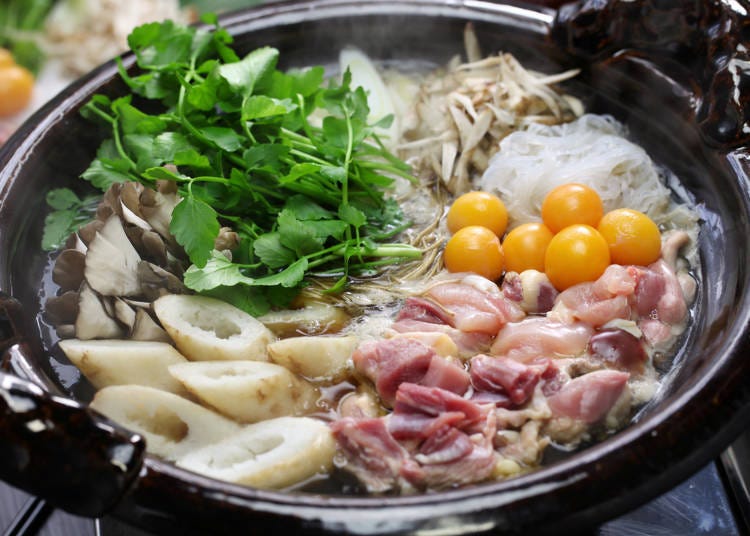
・Bloodline: Father – Hinai jidori, mother – Rhode Island
・Standard: One of the Three Great Jidori of Japan. Typically ready for consumption 170 days after hatching, it is raised on feed specially for Hinai jidori from 60 days after hatching.
Region of production: Kita-Akita city, Akita prefecture
・Meat quality and characteristics: The meat is lean and chewy, with a taste similar to pheasant or copper pheasant, and the umami taste spreads through your mouth as you bite down.
・Recommended dishes:Kiritanpo nabe
Kiritanpo nabe is made using soup stock from chicken carcasses, and seasoned with soy sauce, cooking sake, and mirin to create a soup which the jidori chicken, locally produced vegetables, and kiritanpo (pounded rice on a stick that is grilled over a fire) is added to, and is a local delicacy of Akita prefecture. Starting from the chicken, you can taste the umami of the food spread throughout your palate as it enters your mouth.
2. Nagoya Cochin
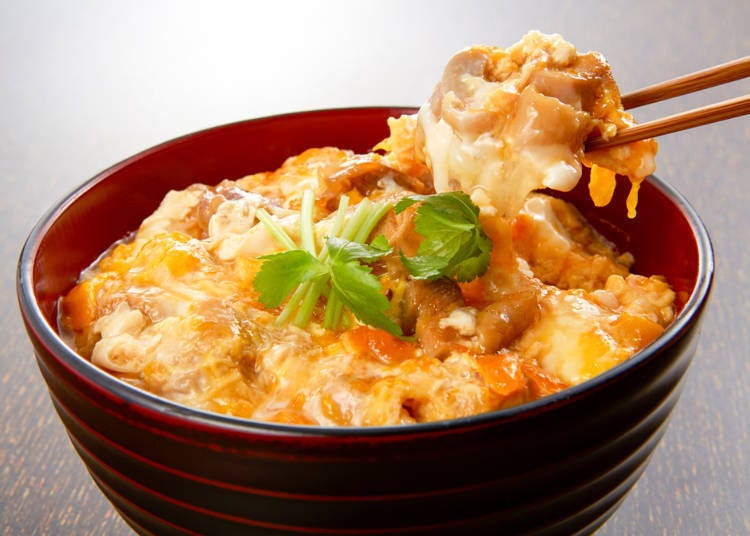
・Bloodline: Male – Nagoya breed, female – Nagoya breed
・Standard: One of the Three Great Jidori of Japan. About 125 days after hatching, it has to be fed on a specialized feed to be 100% recognized as Nagoya Cochin jidori.
Region of production: Aichi prefecture
・Meat quality and characteristics: Springy meat with chewiness, it has been enjoyed since ancient times as “kashiwa niku” (a breed of chicken native to Japan with brown-colored flesh). Also well-known for their eggs, they are praised for their small yet smooth and rich eggs.
・Recommended dishes:Oyako-don, etc.
Oyako-don is also known as oyako-donburi, which means “parent and child rice bowl”. Chicken meat and egg (the parent and child) is served on a bowl of rice, called the donburi (a bowl about twice as large as a regular rice bowl), and the resulting dish is called oyako-don. The jidori or regular chicken meat is steamed in a slightly sweet dashi stock with a soy sauce base, and warm rice is topped with the chicken, beaten egg (a steamed, runny egg), and dashi stock. The chewiness of the jidori meat and thick smoothness of the egg and dashi stock work in perfect harmony with the rice for an excellent dish.
3. Satsuma jidori
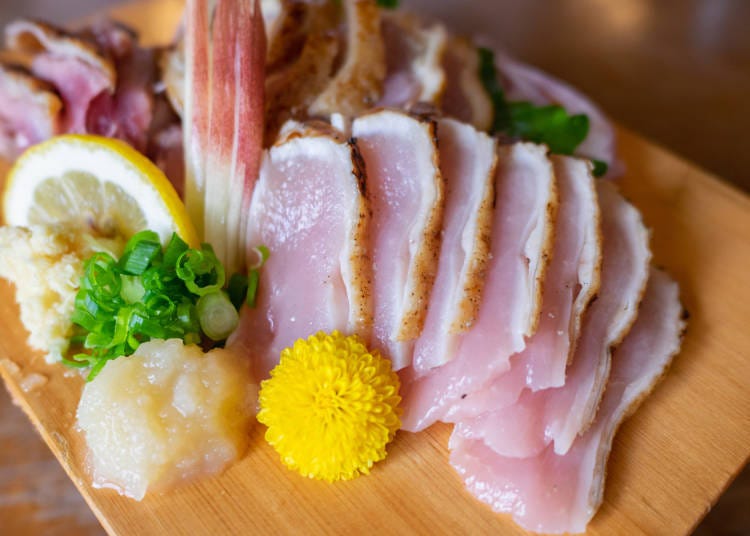
・Bloodline: Male – Satsuma jidori (Satsuma x Rhode Island cross), female – Satsuma jidori (Satsuma x Rhode Island cross)
・Standard: One of the Three Great Jidori of Japan. Ready for consumption after 135 days. A jidori that was crossbred in the 12th century between Satsuma chickens, a natural treasure, and Rhode Island chickens.
Region of production: Kagoshima prefecture
・Meat quality and characteristics: Lean muscle, even amidst the softness you can feel the firmness of the meat, and the richness of the umami is enjoyable.
・Recommended dishes:Torisashi (chicken sashimi), etc.
Torisashi is sashimi of chicken meat, which is prepared by lightly searing the outside of the meat, then thinly slicing it and serving it with spices such as ginger, garlic, and spring onion, then dipped in soy sauce and eaten. Thigh, breast, tenderloin, and other portions are usually arranged onto a plate, allowing you to enjoy various flavors at one go.
4. Okukuji Shamo
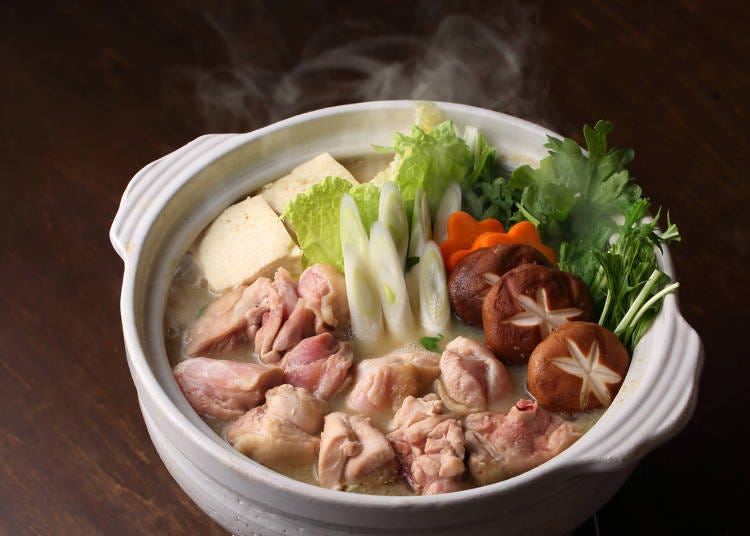
・Bloodline: Male – Shamo, female – Nagoya x Rhode Island
・Standard: Jidori chicken that is raised in the wilderness of Okukuji in the northern part of Ibaraki prefecture. Ready for consumption after 140 days. Raised on a feed specially for Okukuji Shamo chicken.
Region of production: Ibaraki prefecture (Kuji-gun Daigo-machi, Hitachiota city, Hitachiomiya city, Naka city, Takahagi city)
・Meat quality and characteristics: The muscle fibers are tight and low in fat, making it healthy, and the taste of the meat is so strong that chefs often specifically buy it for this reason.
・Recommended dishes:Shamo nabe, etc.
Shamo nabe is a hotpot dish which uses Shamo meat. To enjoy the taste of the Shamo meat, the dashi stock is simple, usually consisting of water, soy sauce, cooking sake, and mirin. As Shamo meat has little fat, it has a springy and juicy texture, with an umami taste that spreads with each bite. The vegetable which absorbs the dashi stock that the Shamo was cooked in is especially delicious.
5. Sai-no-kuni jidori Tamashamo
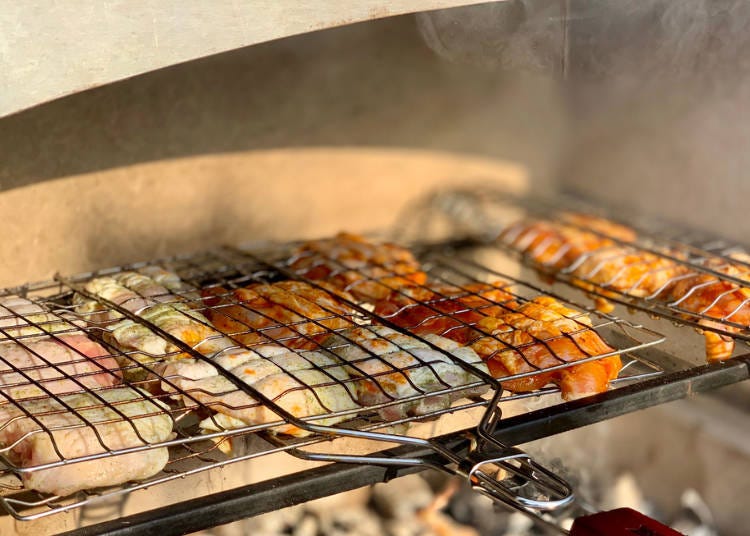
・Bloodline: Male – Yamato Shamo x New Hampshire x Oshamo (male), female – Tamashamo original breed (male) x Rhode Island (female)
・Standard: Ready for consumption after 180 days. A crossbreed between Yamato Shamo, Oshamo, and New Hampshire chickens, feed for the chickens includes bacteria used in making Natto.
Region of production: Saitama prefecture (Sakado city, Fukuya city, Kawagoe city, Chichibu city)
・Meat quality and characteristics: Juicy meat that retains water, it is plump with a nice bite.
・Recommended dishes:Net grill, etc.
6. Suruga Shamo
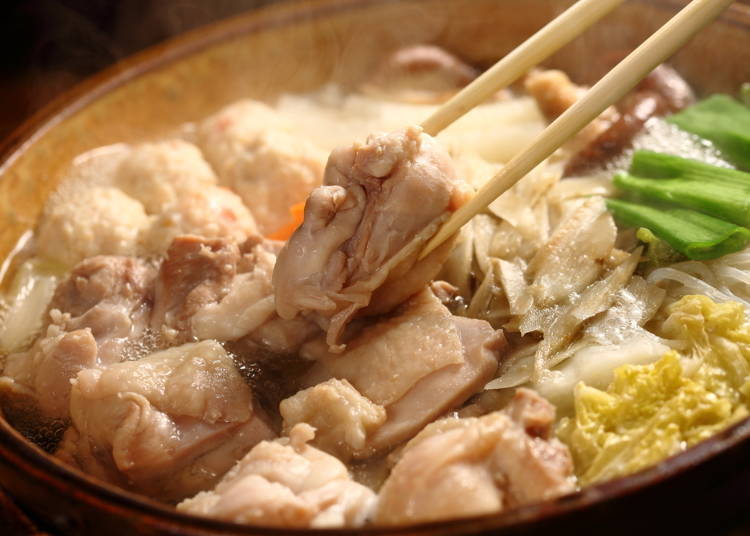
・Bloodline: Male – (male Shamo x female Nagoya) x (male Shamo x female Tosakusan), female – (male Shamo x female Banded Plymouth Rock) x (male Shamo x female Hinai jidori)
・Standard: Ready for consumption after 130 days. Raised on an all-natural feed that includes tea and persimmon vinegar from the prefecture, as well as chikusakueki, cooled and liquified gas from making bamboo charcoal.
Region of production: Shizuoka prefecture (Shizuoka city, Fujimiya city, Kakegawa city)
・Meat quality and characteristics: Low in fat with a delicate texture, the natural umami of the meat spreads through your mouth.
・Recommended dishes:Suruga Shamo nabe
Suruga Shamo nabe is a hotpot dish of Suruga Shamo chicken with plenty of vegetables. The light dashi stock and finely sliced burdock root make the taste of the Suruga Shamo meat stand out. With a firm and crisp texture, it is a wonderful dish with umami that spreads with each bite.
7. Hyōgo-ajidori
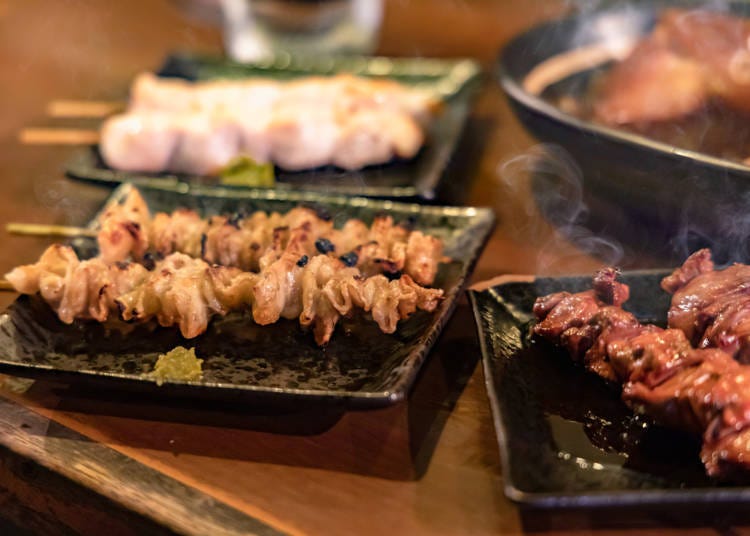
・Bloodline: Male – male Satsuma x female Nagoya, or White Plymouth Rock, female – White Plymouth Rock, or male Satsuma x female Nagoya
・Standard: Ready for consumption after 100 days. Raised in the wilderness of Bashū in the northwest of Hyogo prefecture, the chickens are raised on feed containing sake lees (rice used to make Japanese rice wine) of Yamada Nishiki rice.
Region of production: Hyogo prefecture (Himeji city, Mita city, Sasayama city, etc.)
・Meat quality and characteristics: Muscle fibers are thin and tightly packed for some bite in the texture, it contains the rich taste of original Japanese chicken.
・Recommended dishes:Yakitori, etc.
8. Awao dori
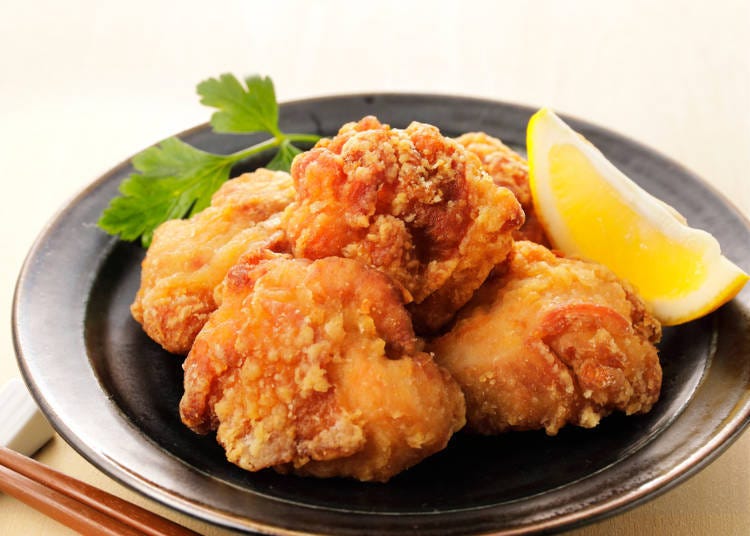
・Bloodline: Male – Shamo, female – White Plymouth Rock
・Standard: A jidori that is a crossbred between Tokushima’s Awa jidori chickens with wakadori chickens. Ready for consumption after about 82 days. Raised freely in the nature of the west and south side of Tokushima prefecture.
Region of production: Tokushima prefecture
・Meat quality and characteristics: The meat has streaks of leanness and is low in fat, and it is firm but not overly so, making it suitable for karaage, allowing you to enjoy its rich and sweet taste and umami.
・Recommended dishes:Karaage, etc.
9. Hakata jidori
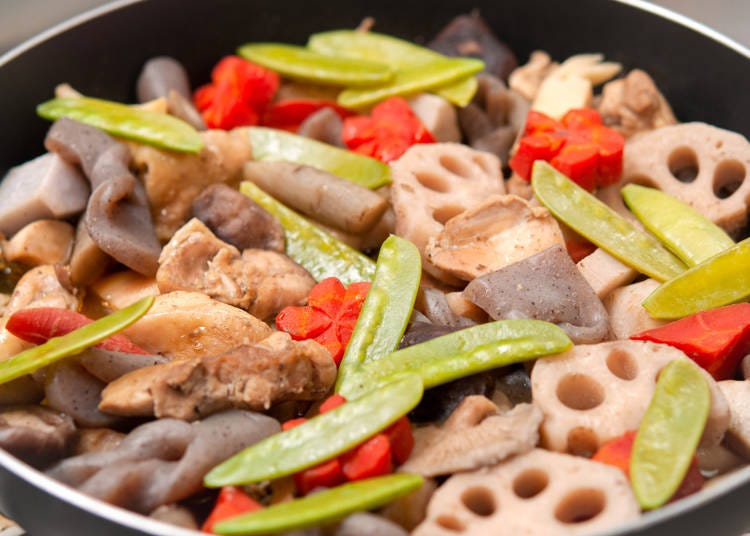
・Bloodline: Male – Shamo x Banded Plymouth Rock, female – White Plymouth Rock
・Standard: Ready for consumption 85 days after hatching. Bred to complement the taste of local cuisine in Fukuoka (Chikuzenni and mizutaki). The breast meat is being studied for its benefits in preventing the decline of cognitive function, and is recognized as a food with potential health benefits (based on the claims of the producer, with their own research backing).
Region of production: 11 farms in Fukuoka prefecture
・Meat quality and characteristics: The muscle fibers are fine, making it not just easy to bite, but results in a chewy texture that spreads the umami taste throughout your mouth.
・Recommended dishes:Chikuzenni, mizutaki, etc.
Chikuzenni is a steamed dish consisting of chicken, carrots, lotus, and other root vegetables, with rehydrated dried shiitake mushrooms and konjac added, and it is also called “gamenii” in Fukuoka. As a dish that makes full use of the dashi stock from the ingredients used, it is a dish regularly served during new year.
Mizutaki is prepared by boiling whole chicken carcasses until a white chicken soup full of umami is achieved, which is then boiled with chicken parts (with the bone attached) and vegetables before being served.
10. Miyazaki Jitokki
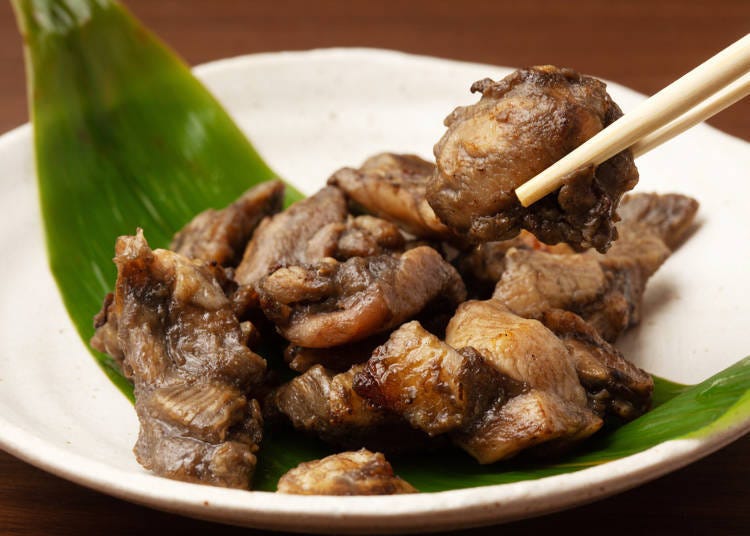
・Bloodline: Male – Jitokko x Inferior White Plymouth Rock F1, female – Kyushu Rhode (Rhode Island x Inferior White Plymouth Rock)
・Standard: The only crossbred jidori that was created in Miyazaki prefecture, using Jitokko chickens from the south of Kyushu. Ready for consumption after 135 days. Raised on a special blend of feed formulated just for Miyazaki Jitokko chickens.
Region of production: Miyazaki prefecture
・Meat quality and characteristics: Firm meat texture despite its softness, and unusually for jidori chickens, has a juicy umami taste with no smell.
・Recommended dishes:Charcoal grilled chicken
Why not give Japan’s jidori chickens a try? There are many other varieties of Jidori chickens besides the ones we’ve introduced here.
When exploring Japan, be sure to check out the menu, try out the special dishes created by each restaurant, and challenge yourself to trying out dishes you’ve ordered online, so please challenge yourself to trying the jidori chicken that catches your interest in the style you like.
(Supervised by Ishihara Natsuko, Japan Association for Food Education and Communication)
Written by:

- Category
*Prices and options mentioned are subject to change.
*Unless stated otherwise, all prices include tax.
Limited time offer: 10% discount coupons available now!
Recommended places for you
-
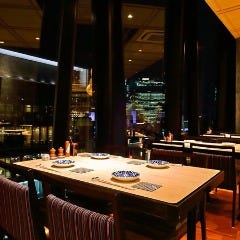
Torisuki Tokyu Plaza Ginza
Yakitori
Ginza
-
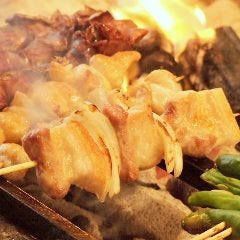
SUSUKINOTORIYAEKIMAEDOORITEN
Yakitori
Sapporo / Chitose
-
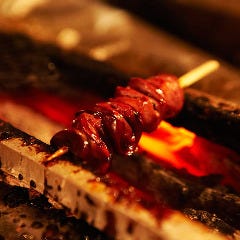
Torisemmonkoshitsu Toribakaichidai Ginza
Yakitori
Ginza
-
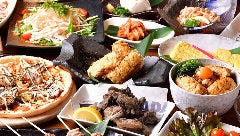
Yamekomachi Uranambaten
Yakitori
Namba, Dotonbori, Shinsaibashi
-
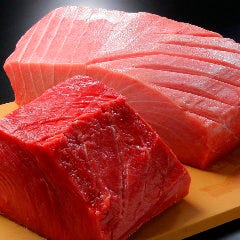
Kamesushi Sohonten
Sushi
Umeda, Osaka Station, Kitashinchi
-
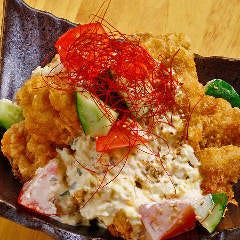
Sumibiyakidining Okageya Umedaten
Yakitori
Umeda, Osaka Station, Kitashinchi
-

Best Things to Do in Tokyo in April 2024: Events, Festivals & More
-

Everything You Need To Know About the Kyoto-Osaka Sightseeing Pass
-

The CASIO S100: How CASIO's Masterpiece Calculator Redefines Business Elegance With Japan-Made Reliability
-

15 Must-Try Sushi Restaurants in Tokyo (+5 Trending Areas to Explore for Foodies)
-

12 Unique & Fun Tokyo Food Tours to Enjoy in 2024
-

A Complete Guide to the JR West Kansai Area Pass
-
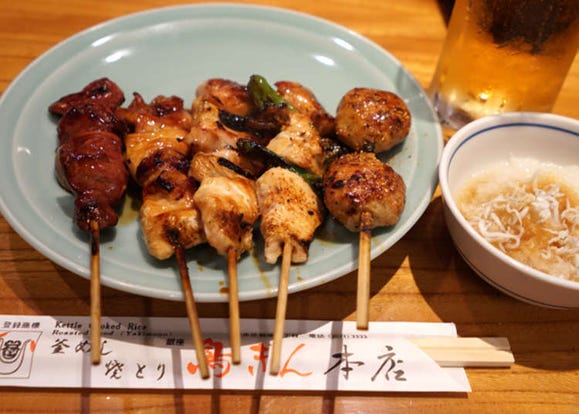
Grilled Chicken Galore! 3 Amazing Yakitori Shops in Tokyo’s Ginza Area
-

10 Must-Visit Places for Autumn Leaves in Tohoku: Naruko Gorge, Geibikei Gorge & More
-
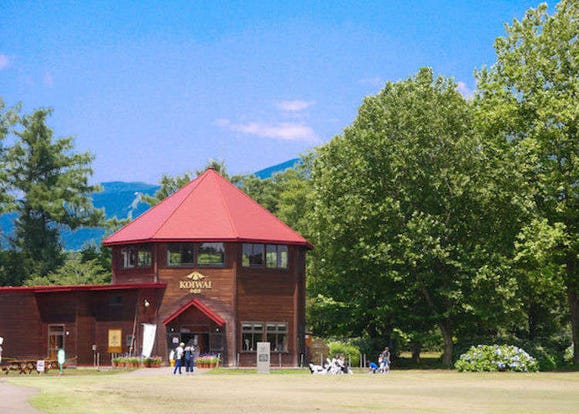
Koiwai Farm Guide: Eat, Learn and Play at Iwate Prefecture's Premier Agritourism Destination!
-
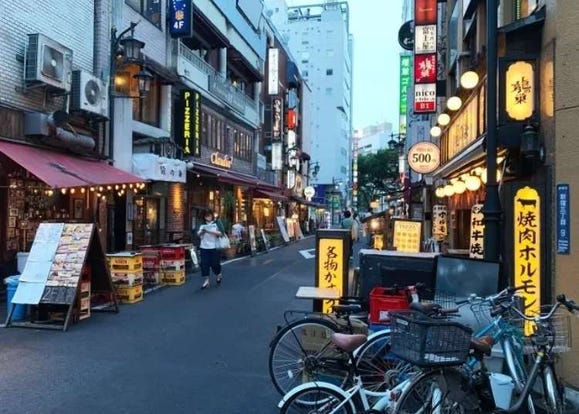
Japanese restaurant chain causes a stir with foreigners online, but is it any good?
-

Tokyo Roppongi: 5 Most Amazing Spots at Roppongi Hills and How to Make the Best of Them!
-

Eggs on a Stick?! These Amazing Japanese Yakitori Places Will Take You to New Realms of Flavor
- #best sushi japan
- #what to do in odaiba
- #what to bring to japan
- #new years in tokyo
- #best ramen japan
- #what to buy in ameyoko
- #japanese nail trends
- #things to do japan
- #onsen tattoo friendly tokyo
- #daiso
- #best coffee japan
- #best japanese soft drinks
- #best yakiniku japan
- #japanese fashion culture
- #japanese convenience store snacks












